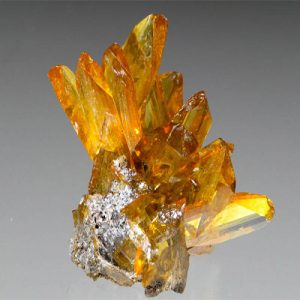Anglesite
Anglesite is a lead that is a rare mineral that’s a member associated with the Barite Group of minerals that includes Anglesite, Barite and Celestine. Anglesite is really an extremely rare and the gem that is breathtaking. Colours range from colourless to pale yellowish to orange. The dispersion of Anglesite is corresponding to compared to a diamond, so well cut gems are undoubtedly bright and magnificent. It is a hard gem to cut due to its low hardness and cleavage that is good. Anglesite is a very thick and a gem that is heavy on its high lead content (68%). The 2 most locations that are notable gem quality crystals are Tsumeb, Namibia and Touissit, Morocco.
There are a few localities for well-crystallized specimens that are anglesite. They consist of: the locality that is type Parys Mountain, Anglesey, Wales. In England, at Matlock and Cromford, Derbyshire, and Caldbeck Fells, Cumbria. From Leadhills, Lanarkshire, and Wanlockhead, Dumfriesshire, Scotland. At Bleiberg, Carinthia, Austria. From Mežica (Mies), Slovenia. In Germany, at M¨usen, Littlefield, Siegen, as well as other places in Siegerland. From Monteponi and Montevecchio, near Iglesias, Sardinia. In Russia, at Berezovsky, near Yekaterinburg (Sverdlovsk), Middle Ural Mountains, and at Nerchinsk, Siberia. From Sidi-Amor-ben-Salem, Tunisia. Fine crystals during the Touissit Mine, near Oujda, Morocco. Very crystals that are large Tsumeb, as well as in the Kombat Cu–Pb–Ag mine, 49 km south of Tsumeb, Namibia. In the USA, from the Wheatley Mine, Phoenixville, Chester County, Pennsylvania; in Idaho, through the Bunker Hill mine, Coeur d’Alene district, in the Hypotheek mine, south of Kingston, and the Chance that is last and mines, Wardner, Shoshone County; into the Eureka Hill Mine, Tintic District, Juab County, Utah; from the Grand Reef mine, Graham County, Arizona. In Mexico, from Los Lamentos, Chihuahua; within the Amelia Mine, Santa Rosalia, Baja California; at San Felipe Canyon, Aconchi, Sonora. In Australia, big crystals from Broken Hill, New South Wales, and at Dundas, Tasmania.
| Category: | Sulphate minerals |
| Chemical Formula: | PbSO4 |
| Lead Sulfate | |
| Molecular Weight: | 303.26 gm |
| Composition: | Lead | 68.32 % | Pb | 73.60 % | PbO |
| Sulfur | 10.57 % | S | 26.40 % | SO3 | |
| Oxygen | 21.10 % | O | |||
| 100.00 % | 100.00 % | = TOTAL OXIDE | |||
| Crystallography: | Orthorhombic – Dipyramidal |
| Crystal Habit: | Crystals are typically elongated with rhomboidal cross-section, prismatic with large {210}, vertically striated, or large {011} with {101} and {102}; tabular on {001} or {100}; equant {111} and {211}, may exhibit 20 other minor forms, to 0.5 m. Also nodular, stalactitic, granular, massive, banded around a core of Galena. |
| Twinning: | None |
| Cleavage: | Good on {001}, Distinct on {210}, on {010} in traces. Parting: Translation gliding and twin gliding occur (as in Baryte). |
| Fracture: | Conchoidal |
| Tenacity: | Brittle |
| Moh’s Hardness: | 2.5 – 3.0 |
| Density: | 6.37 – 6.39 (g/cm3) |
| Luminescence: | May fluoresce Yellow and Golden Yellow under UV. |
| Radioactivity: | Not Radioactive |
| Health Warning: | CAUTION: Contains Lead. Wash hands after handling. Do not lick or ingest; do not inhale dust when breaking. Do not grind dry. |
| Colour: | Colourless to White, often tinted Grey, Yellow, Green or Blue, rarely Violet; Colourless in transmitted light. |
| Transparency: | Transparent, Translucent, Opaque |
| Luster: | Adamantine, Resinous to Vitreous |
| Refractive Index: | 1.877 – 1.894 Biaxial ( + ) |
| Birefringence: | 0.017 |
| Dispersion: | Strong; r < v (0.044 – equal to diamond) |
| Pleochroism: | None |


